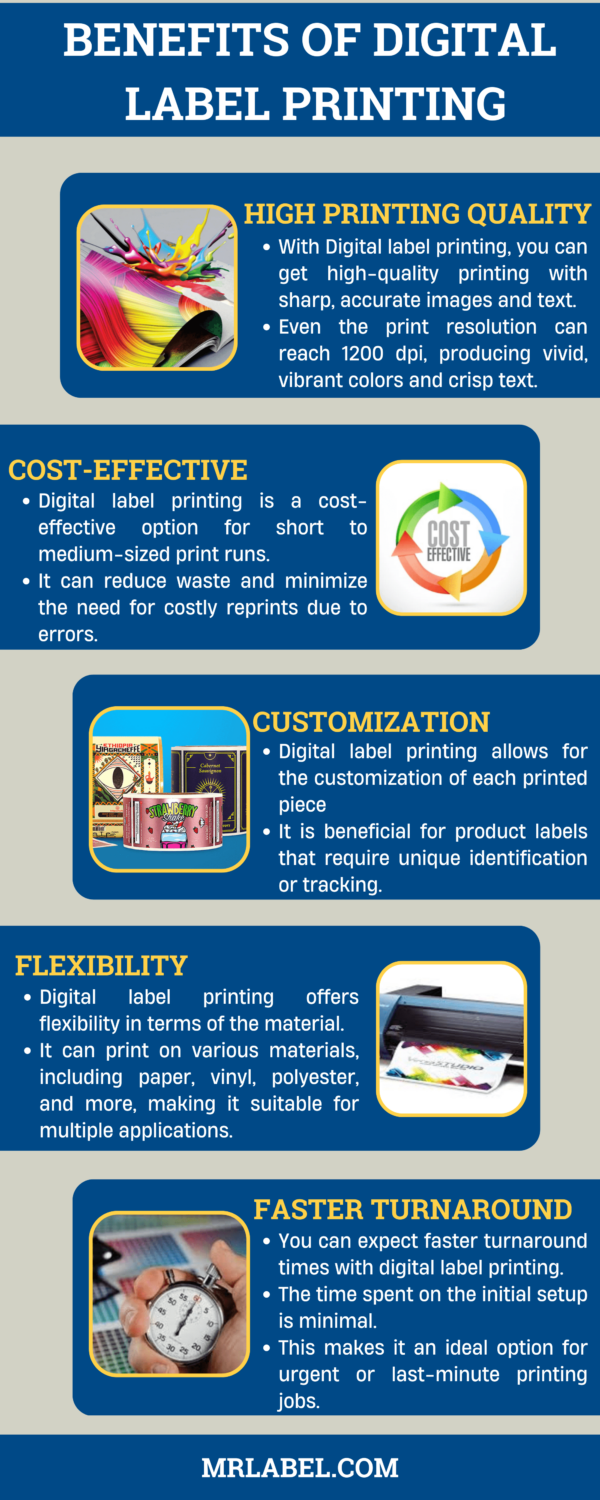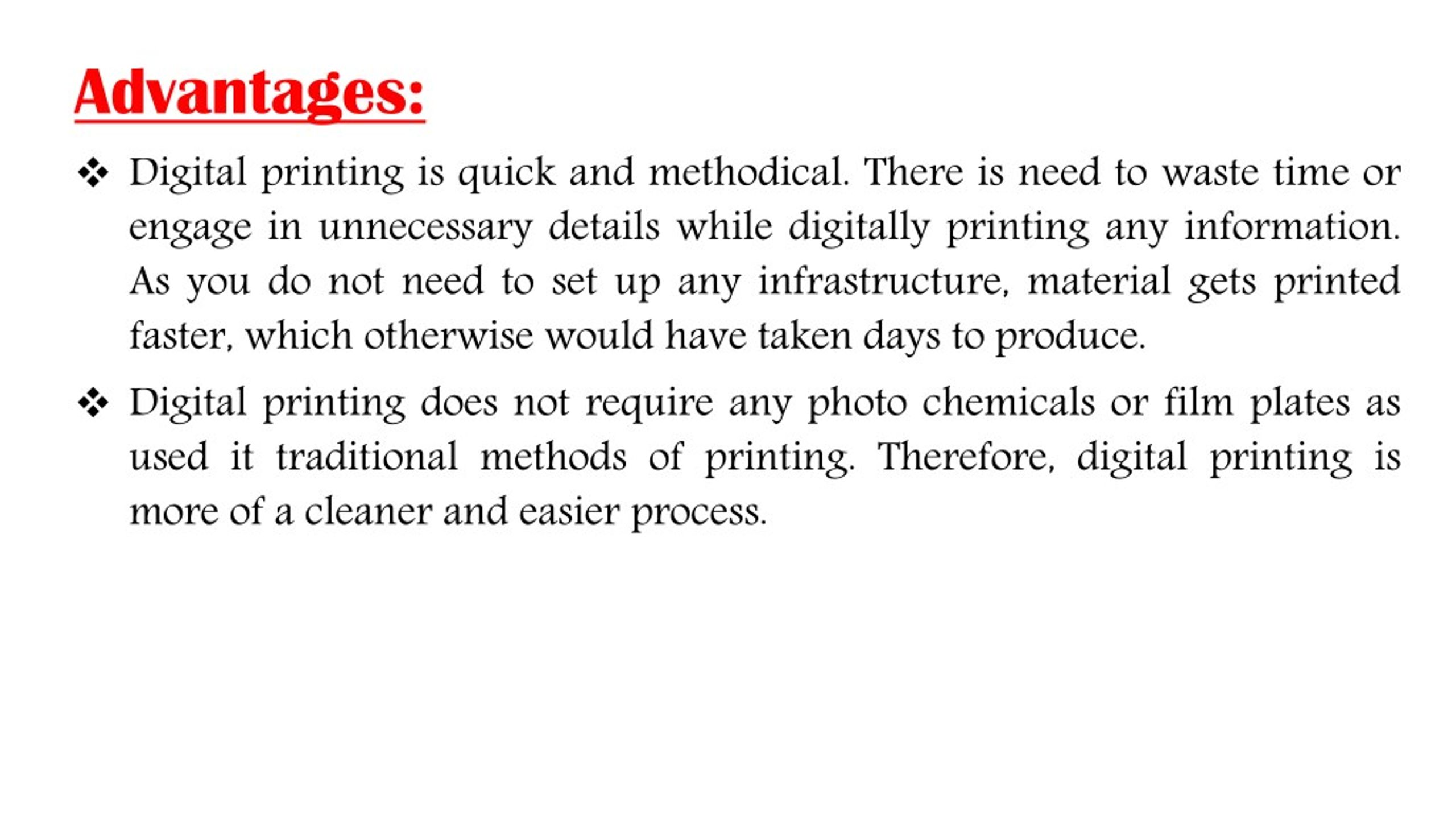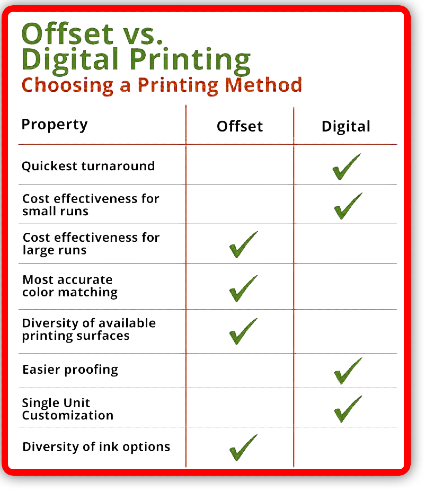More About Digital Printing
More About Digital Printing
Blog Article
Facts About Digital Printing Revealed
Table of ContentsHow Digital Printing can Save You Time, Stress, and Money.Digital Printing for DummiesDigital Printing - The Facts3 Easy Facts About Digital Printing ShownWhat Does Digital Printing Mean?Excitement About Digital Printing
Variable information printing, such as direct mail with individualized codes and addresses, is preferably fit for digital printing. Digital fast printing just requires 4 steps of design, review, printing and binding to obtain every little thing done. Digital quick printing has an unequaled benefit: print on need.According to PMMI, digital printing permits brand names and makers to respond promptly to client needs while boosting the supply chain, minimizing warehousing cost and waste, and delighting in faster time to market. That all audios wonderful, yet how does this modern technology do all that? The major differentiator of these technologies is that there are no set-up charges and no plates with electronic printing.
Digital Printing Can Be Fun For Anyone
According to Wikipedia, the biggest difference between electronic printing and traditional techniques such as lithography, flexography, gravure, or letterpress - Digital Printing is that there is no demand to change printing plates in electronic printing, whereas in these analog printing techniques the plates are consistently changed. This leads to quicker turn-around time and reduces price when utilizing digital printing.
Fast production means getting your product to market quicker. It also indicates it's simpler and faster to make changes later, when you transform a dish, add a SKU, or produce seasonal packaging. Digital printing is extremely flexible, so it's very easy to make modifications to the plan layout rapidly. All of it returns to home plates.
Extra inventory can indicate more waste in the future. With standard printing methods, short-run printing is simply not feasible. Due to the fact that a fantastic style can make or damage your product, digital printing consistently develops premium, clear and colorful graphics each time. Digital printing on flexible bags includes the brilliant, dynamic, and specific graphics that virtually beckon customers to connect and touch them.
Digital printing is the process of printing digital-based photos directly onto a variety of media substrates. There is no demand for a printing plate, unlike with balanced out printing. Digital files such as PDFs or desktop computer publishing documents can be sent straight to the electronic printing press to publish on paper, image paper, canvas, material, synthetics, cardstock and various other substrates.
The Single Strategy To Use For Digital Printing
According to PMMI, electronic printing enables brand names and makers to react rapidly to customer needs while enhancing the supply chain, reducing warehousing cost and waste, and appreciating faster time to market. That all sounds excellent, however just how does this technology do all that? The significant differentiator of these modern technologies is that there are no set-up costs and no plates with digital printing.
According to Wikipedia, the best distinction in between electronic printing and traditional approaches such as lithography, flexography, gravure, or letterpress is that there is no need to replace printing plates in electronic printing, whereas in these analog printing techniques home plates are consistently replaced. This leads to quicker turn-around time and reduces price when using digital printing.

Indicators on Digital Printing You Should Know
With standard printing company website techniques, short-run printing is just not possible. Because a terrific design can make or damage your item, digital printing consistently produces my blog top notch, clear and colorful graphics each time.

According to PMMI, electronic printing allows brand names and manufacturers to respond quickly to client demands while boosting the supply chain, lowering warehousing expense and waste, and appreciating faster time to market. That all noises great, but exactly how does this innovation do all that? The significant differentiator of these innovations is that there are no set-up costs and no plates with digital printing.
Digital Printing for Beginners
According to Wikipedia, the greatest distinction between digital printing and typical techniques such as lithography, flexography, gravure, or letterpress is that there is no demand to replace printing plates in electronic printing, whereas in these analog printing methods home plates are consistently changed. This results in quicker turn-around time and decreases price when utilizing electronic printing.
Rapid production suggests getting your item to market much faster. It additionally suggests it's easier and faster to make modifications later, when you change a recipe, include a SKU, or create seasonal packaging. Digital printing is very flexible, so it's easy to make changes to the plan layout rapidly. Everything returns to home plates.

Rumored Buzz on Digital Printing
Digital printing is the process of printing digital-based pictures straight onto a selection of media substratums. There is no demand for a printing plate, unlike with countered printing. Digital documents such as PDFs or desktop publishing files can be sent out straight to the electronic printing machine to publish theoretically, picture paper, canvas, material, synthetics, cardstock and other substrates.
Report this page